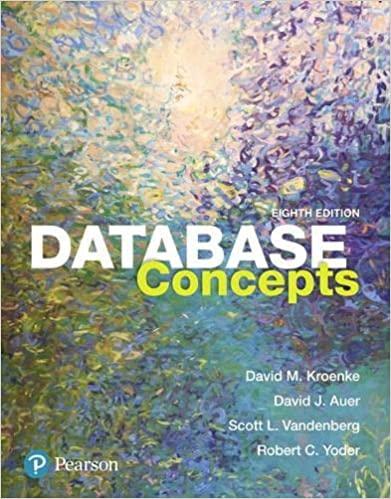Answered step by step
Verified Expert Solution
Question
1 Approved Answer
Capstone Project In this task, you will develop a Python program that performs sentiment analysis on a dataset of product reviews. Follow these steps: Download
Capstone Project
In this task, you will develop a Python program that performs sentiment analysis
on a dataset of product reviews.
Follow these steps:
Download a dataset of product reviews: Consumer Reviews of Amazon
Products. You can save it as a CSV file, naming it:
amazonproductreviews.csv
Create a Python script, naming it: sentimentanalysis.py Develop a Python
script for sentiment analysis. Within the script, you will perform the
following tasks using the spaCy library:
Implement a sentiment analysis model using spaCy: Load the
encorewebsm spaCy model to enable natural language processing
tasks. This model will help you analyse and classify the sentiment of the
product reviews.
Preprocess the text data: Remove stopwords, and perform any
necessary text cleaning to prepare the reviews for analysis.
To select the 'review.text' column from the dataset and retrieve
its data, you can simply use the square brackets notation. Here
is the basic syntax:
reviewsdata dataframereviewtext'
This column, 'review.text, represents the feature variable
containing the product reviews we will use for sentiment
analysis.
To remove all missing values from this column, you can simply
use the dropna function from Pandas using the following
code:
cleandata dataframe.dropnasubsetreviewstext'
Create a function for sentiment analysis: Define a function that takes
a product review as input and predicts its sentiment
Test your model on sample product reviews: Test the sentiment
analysis function on a few sample product reviews to verify its accuracy
in predicting sentiment
Write a brief report or summary in a PDF file:
sentimentanalysisreport.pdf that must include:
A description of the dataset used.
Details of the preprocessing steps.
Evaluation of results.
Insights into the model's strengths and limitations
Additional Instructions:
Some helpful guidelines on cleaning text:
To remove stopwords, you can utilise the isstop attribute in spaCy.
This attribute helps identify whether a word in a text qualifies as a
stop word or not. Stopwords are common words that do not add
much meaning to a sentence, such as "the", is and of
Subsequently, you can then employ the filtered list of tokens or
wordswords with no stop words for conducting sentiment analysis.
You can also make use of the lower strip and str methods to
perform some basic text cleaning.
You can use the spaCy model and the sentiment attribute to analyse the
review and determine whether it expresses a positive, negative, or neutral
sentiment To use the polarity attribute, you will need to install the
TextBlob library. You can do this with the following commands:
# Install spacytextblob
pip install spacytextblob
Textblob requires additional data before getting started, download the data
using the following code:
python m textblob.downloadcorpora
Once you have installed TextBlob, you can use the sentiment and
polarity attribute to analyse the review and determine whether it
expresses a positive, negative, or neutral sentiment You can also
incorporate this code to get yourself started:
# Using the polarity attribute
polarity doc.blob.polarity
# Using the sentiment attribute
sentiment doc.blob.sentiment
FYI: The underscore in the code just above is a Python convention for naming
private attributes. Private attributes are not meant to be accessed directly by the
user, but can be accessed through public methods.
You can use the polarity attribute to measure the strength of the
sentiment in a product review. A polarity score of indicates a very positive
sentiment while a polarity score of indicates a very negative sentiment A
polarity score of indicates a neutral sentiment
You can also use the similarity function to compare the similarity of two
product reviews. A similarity score of indicates that the two reviews are
more similar, while a similarity score of indicates that the two reviews are
not similar.
Choose two product reviews from the 'review.text' column and
compare their similarity. To select a specific review from this column,
simply use indexing, as shown in the code below:
myreviewofchoice datareviewstext'
The above code retrieves a review from the 'review.text' column at
index You can select two reviews of your choice using indexing.
However, please be cautious not to use an index that is out of bounds,
meaning it exceeds the number of data points or rows in our dataset.
Include informative comments that clarify the rationale behind each line of
code.
Step by Step Solution
There are 3 Steps involved in it
Step: 1

Get Instant Access to Expert-Tailored Solutions
See step-by-step solutions with expert insights and AI powered tools for academic success
Step: 2

Step: 3

Ace Your Homework with AI
Get the answers you need in no time with our AI-driven, step-by-step assistance
Get Started


